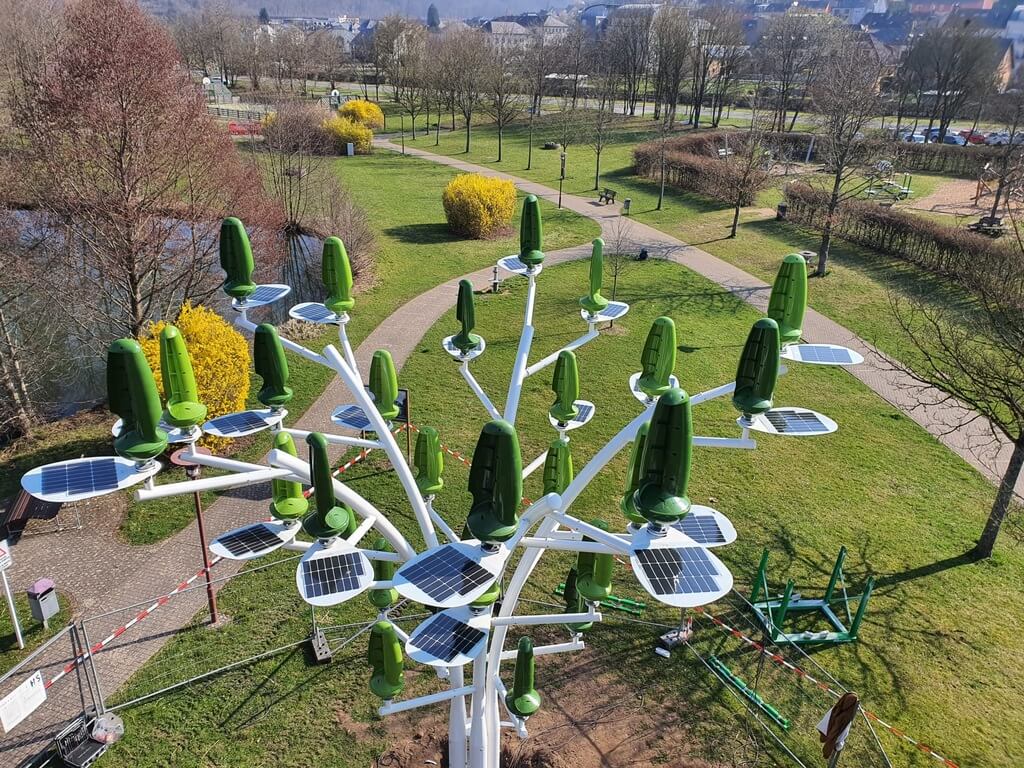If you’ve heard us talk about the exciting new LEAP grant project coming to Venango County, you’ve probably heard us say that a microgrid is a key part of its design. But what exactly is a microgrid, and why should you care about it?
What is a Microgrid? A microgrid is a small, local energy system that can operate independently or connect to the larger electric grid. Think of it like a mini power plant just for your community. In our case, we’re building a microgrid that uses renewable energy sources—like solar panels and small vertical wind turbines—to generate electricity right where it’s needed. This makes energy more reliable, especially in emergencies or during power outages.
How Does a Microgrid Work? There are many different types of microgrids, but our community’s microgrid will have two main parts: a central system and energy built into individual homes.
First, solar panels will be installed over a stormwater pond, which the Department of Environmental Protection requires to catch rainwater runoff. These panels will soak up the sun’s energy and turn it into electricity, helping power the nearby homes and buildings. This setup is an efficient way to put otherwise unused space to work and reduce our need for electricity from traditional power plants.
Second, each building in the new subdivision will also have its own solar panels and even vertical wind turbines. Solar panels can be integrated into roofing and walls, while small vertical wind turbines – ranging from the size of a breadbox to the size of a chest freezer – can be used as energy-producing decoration or mounted on surfaces such as rooflines or light poles. Solar panels and wind turbines can even be combined into one structure, so you can generate power at any time or in any weather without detracting from the beauty of a neighborhood or natural area.

What About Storing Energy? You might be wondering, “What happens when it’s dark or the wind isn’t blowing?” That’s where energy storage comes in. Each part of the microgrid, from the central solar panels to the systems in each home, will have batteries to store electricity. This means that even when the sun isn’t shining or the wind is calm, your home can still have power.
Why Does This Matter for You? The main benefit of having a microgrid is reliability. If the larger electric grid goes down, a microgrid can keep running. That means homes and businesses in the area won’t have to worry about losing power during a storm or other emergencies. It’s like having a backup plan, but one that doesn’t rely on anything far away—it’s all right here, in our community.
Plus, using renewable energy sources like the sun and wind helps reduce pollution and lowers our dependence on fossil fuels. It’s a win-win for the environment and your wallet, as renewable energy can help keep costs down in the long run.
What’s Next? We’re still in the planning stages, but once everything is up and running, Venango County will have one of the most energy-resilient communities in the region. It’s an exciting step toward a cleaner, more reliable future for all of us and a chance for the Oil Region to again be a part of an energy revolution.
Keep an eye on this column for updates as we move forward, and if you have any questions about the project, feel free to reach out. We’re always happy to explain more! You can reach out via email: rachel@riverrootsredevelopment.org. Keep an eye on our Facebook page @RiverRootsRedevelopment for more updates and for upcoming Community Coffee Chats, where you can find out more about local projects and share your own ideas with some of those involved in local redevelopment.
——————-
Rachel Brosnahan is the Community Engagement Coordinator for River Roots Redevelopment. She can be reached by email at rachel@riverrootsredevelopment.org.